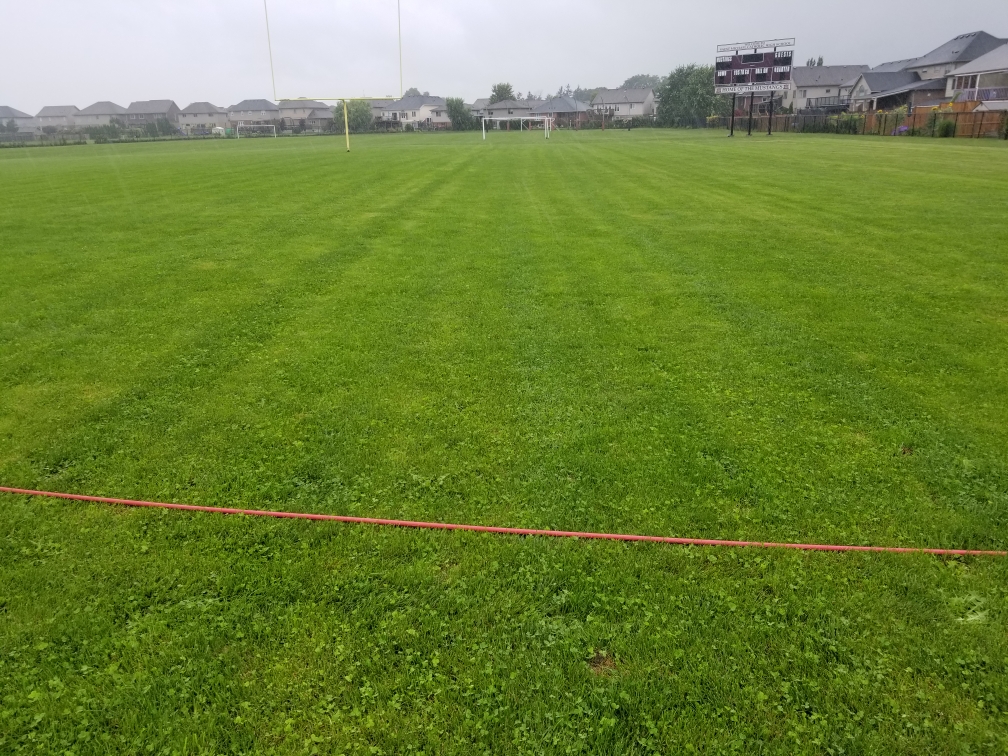Listening to Nature’s Whispers
For 44 years, I’ve been knee-deep in the soil of St. Catharines, Niagara, and beyond, uncovering truths that have shaped Stangl’s Enviro Lawn Care. One of the most surprising lessons? What we call “weeds” might be nature’s gentle nudge rather than a battle to win. If sprays have been your go-to for dandelions or crabgrass, that’s a choice many share, rooted in long-held advice. But what if there’s a better way—one that works with the land? Let’s explore this together, guided by soil experts Glen Ravenberg and Dr. Thomas Dykstra, and my own journey. This isn’t about pointing fingers—it’s an invitation to see lawns anew.
Weeds: Nature’s Silent Guides
Glen Ravenberg, a farmer with a practical touch, offered a perspective that reshaped my approach: weeds aren’t foes; they’re signals. In our discussions (watch here), he noted how dandelions flourish where soil needs attention—compacted, nutrient-scarce, or lacking life. Dr. Thomas Dykstra, a biologist with a keen eye for plant vitality, agrees. He sees these plants as barometers, their deep taproots (up to 10-15 inches) pulling minerals like calcium and potassium from below to enrich the surface when soil health improves. Over decades, I’ve watched this unfold across Niagara lawns, leading me to a quiet confidence: spraying might overlook the real story.
Academia has leaned heavily on herbicides, backed by years of research promising pristine lawns. I honor that foundation—it’s shaped beautiful landscapes. Yet, standing alongside that wisdom with my experience, I’ve observed a different path. Sprays often treat symptoms, not the soil beneath. Dandelions and other “weeds” aren’t invaders to defeat; they’re messengers inviting us to nurture the earth more deeply.
The Spray Habit: A Gentler Alternative Awaits
If you’ve turned to sprays, it’s a natural response—lawn care has long sold them as the answer to weeds. For years, I walked that road too, seeking that perfect green. But my “I told you so” moment came softly: I noticed the toll—fading grass, compacted soil, and a cycle needing more chemicals. Dr. Dykstra warns that this lowers Brix levels below 10, where plants weaken and pests take hold. Glen adds that it starves soil of carbon, the lifeblood for microbes that sustain growth. I’ve learned this firsthand, not to judge, but to offer a way forward. What if we could break this cycle and let nature lead?
Stangl’s Solution: Nurturing from the Ground Up
At Stangl’s, we’ve chosen a different route. Our Nature’s Brew, a microbial ally since 2017, and Pelletized Ultimate Compost (PUC)—10 lbs per 1000 square feet in spring and fall—feed the soil naturally. PUC blends poultry compost, humates, bone ash, feather meal, boron, and micronized wollastonite, packing 2.2-2.6 kg of carbon and minerals like calcium and phosphorus. This isn’t a quick fix; it’s a partnership with the earth, a method Glen and Dykstra endorse.
That carbon, boosted by Nature’s Brew’s 600x microbial surge (per Glen’s observations), drives CO2 production—around 10-15 µmol/m²/s at turf level, as Dykstra describes in his “CPR respiration” concept. Plants soak this up, pushing Brix toward 14+, where weeds like dandelions naturally recede as grass flourishes. Our seven applications, with plasma launching April 2025, will enhance this, especially on sports fields where real grass thrives. Check our progress on our before-and-after page.
Real Grass: A Natural Advantage
Real grass lawns and sports fields, nurtured this way, outshine the challenges of poor soil management. They sequester carbon, support microbial life, and foster resilience—benefits Glen’s yield data (e.g., 30-bushel corn gains) and Dykstra’s Brix research affirm. Imagine this approach spreading: healthier soil, better food, and vibrant communities, all without the heavy hand of sprays. My 44 years suggest this works, not to overshadow others, but to invite a shared discovery. Our Winter 25 26 data will highlight Brix gains and weed shifts, reinforcing this gentle shift.
Why Not Spray? An Open Invitation
So, why reach for sprays when nature offers a guide? Dr. Dykstra’s work shows healthy soil outcompetes weeds naturally, and Glen’s fields prove carbon-fed growth beats synthetic shortcuts. At Stangl’s, we’re not here to critique past choices—only to extend a hand toward a future where lawns thrive organically. Our plasma launch in April 2025, alongside Nature’s Brew and PUC, is a step in that direction.
If dandelions have sparked your curiosity or you’d like your sports field to flourish naturally, let’s connect. I’ve spent decades learning this, and I’d love to walk this path with you. Call me at (905) 641-8133 or visit stangls.com to see how we can transform your lawn. Dive into Glen and Dykstra’s insights here to see the science behind it.
Conclusion: Growing Together
This journey isn’t about being right—it’s about growing together. Dandelions have taught me to listen to the soil, and I invite you to join me. With Stangl’s, we’re not just tending lawns; we’re restoring balance, one regenerative choice at a time. Let’s make 2025 the year we nurture nature’s way—gently, wisely, and for all.
